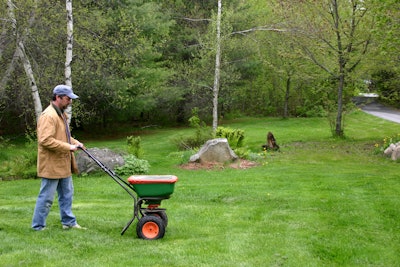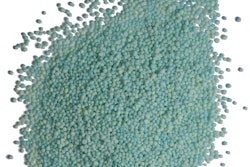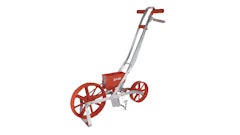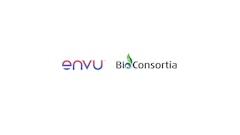
It’s 2018 and, while your fertilizer program was sufficient last year, you were planning to make some upgrades this year based on fertilizer performance and business needs. To help gauge what improvements you might want to make, Green Industry Pros (GIP) spoke with Dr. Eric Miltner, CCA, agronomist, and Chris Derrick, field sales agronomist, both of Koch Turf & Ornamental.
GIP: What’s considered a standard lawn care program in most parts of the U.S.?
Miltner: Based on location and climate, this can vary, but in general, a full-season program would consist of five to seven applications. Fertilizer would be applied on all or most visits. A pre-emergent weed control product is usually applied in the spring (and sometimes in the fall in the South). A post-emergent broadleaf weed control is applied in the late spring, and sometimes in the fall, and there are usually spot treatments mid-season to control escapes. Some programs routinely include insect control in the early summer and some do this on an as-needed basis. There are a lot of variables and a lot of different programs out there.
GIP: What are some signs that a lawn care business should consider changing up its fertilizer program?
Derrick: It is a good idea to evaluate your fertilizer program every year based on fertilizer performance, turf performance needs, new research and products. Some typical signs of poor fertilizer performance include a lack of adequate color and growth, which can lead to other problems, such as weeds, diseases and insect damage. It is also a good idea to evaluate your fertilizer program from a business perspective. There are a number of agronomic, as well as economic, advantages to incorporating more efficient fertilizer technologies into your program.
GIP: What are some of the more common types of fertilizer that lawn care companies apply to their customers’ lawns?
Miltner: Most lawn care companies rely largely on readily available (quick-release) nitrogen fertilizers, with some component of enhanced efficiency fertilizers (EEFs) included. Typically, these EEFs are stabilized nitrogen products or slow-release, polymer-coated, sulfur-coated urea. Unfortunately, these products are not always used to their best advantages. Research indicates that EEF nitrogen sources should make up at least 50 percent of the nitrogen in the blend to truly realize the benefits that they provide. If your fertilizer blend does not deliver at least 50 percent of the nitrogen from an EEF source, talk to your distributor about an alternative blend that does and the performance advantages it can deliver.
GIP: Explain how EEFs differ from other fertilizers.
Derrick: EEFs can be divided into three technology categories: stabilized nitrogen, slow-release fertilizers and controlled-release fertilizers. Considering all fertilizers must release their nutrients to become available to the plant, the release mechanism can be as simple as adding water through irrigation or rainfall. Too much water can move the soluble nutrients to areas where the plant cannot absorb them, reducing the efficiency of the fertilizer. EEFs modify the fertilizer’s release mechanism so that issues, such as too much water, are less likely to result in poor performance. There are various ways to achieve this, including the addition of nitrogen stabilizers and encapsulation of the fertilizer granule.
GIP: What are the different types of EEFs and how do you choose the right one for your operation?
Miltner: It’s important to first understand how different EEFs work in order to make the best choice for your situation. Stabilized nitrogen products work by slowing down the transformations of nitrogen that occur in the soil. Slow-release fertilizers work by slowing down the rate at which nutrients become available. Controlled-release fertilizers achieve a similar result, but with a higher degree of precision and control, as the name implies. Controlled-release fertilizers can extend nutrient release for periods up to six months or even longer. The result is that, when compared to readily available (quick-release) fertilizers, EEFs increase nutrient availability to the plant—thereby improving nutrient use efficiency—and decrease nutrient losses to the environment. Therefore, they have advantages that pay off from agronomic, economic and environmental perspectives.
GIP: If a typical lawn care program features five to seven fertilizer applications, what would a program using EEFs look like?
Derrick: The length of the growing season and the longevity of the EEF’s desired performance are key factors that would determine how many fertilizer applications are required and the proper timing of those applications. In general, the increased efficiency of EEFs has the potential to cut the number of fertilizer applications in a conventional fertilizer program in half. Spring and fall applications should always be a part of any fertilizer program, and the right EEF can provide intermediate applications to keep your plants healthy. A good start to increase efficiency and performance for a typical five- to six-application program would be to apply in the spring and fall, and have two additional applications in between, thus removing one or two applications.
GIP: What are the potential benefits of applying fertilizer fewer times each season?
Miltner: There are many business advantages to applying fewer fertilizer applications. You can save on labor or reallocate labor to other value-added projects. Your freight charges are also lower because less fertilizer is delivered to your location and you use less fuel because you’re hauling less fertilizer to the application site. There is less wear and tear on equipment, and therefore, lower maintenance costs and longer equipment life.
GIP: What should contractors look for in a fertilizer if they want to ensure that they’re buying the best product for their customers’ lawns and for their business?
Miltner: Look for a product with minimal amounts of filler, and high percentages of slow-release, controlled-release or stabilized nitrogen. Read the product label or specification sheet carefully, and/or ask your supplier to provide a copy of the blend sheet that was used to build the fertilizer.
GIP: How does a contractor choose between a liquid or granular fertilizer?
Derrick: Equipment and performance longevity are the two main factors in determining whether to use a liquid or granular fertilizer. Granular fertilizers are applied in a dry manner and require the most basic equipment to apply—a fertilizer spreader. There are two types of granular fertilizer spreaders: rotary and drop. There are also various sizes of spreaders available depending on the coverage area. Sizes can range from small wearable spreaders to those requiring a tractor to operate. No matter the size of the spreader, proper calibration to ensure the right application rate is critical. And with almost all granular fertilizer applications, hardscapes, such as sidewalks and driveways, require cleanup after application.
Liquid fertilizers provide more precise applications, but the equipment required is more complex. Large liquid-holding tanks, filters, pumps, hoses and nozzles are a few components to consider when using and maintaining liquid application equipment. Just like spreaders, there are various sizes of liquid sprayers that range from hand pumps to large trucks with holding tanks.
The final factor that may impact the choice between granular and liquid fertilizer is the desired longevity of the fertilizer. When fertilizer technologies need to last longer than two to three months, only granular fertilizers with increased efficiency can provide adequate feeding. For shorter feeding periods, both liquid and granular fertilizers can provide adequate results.


















